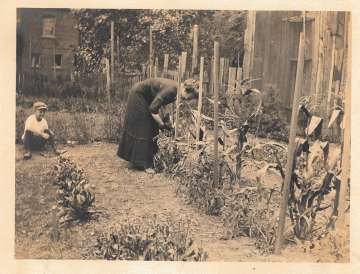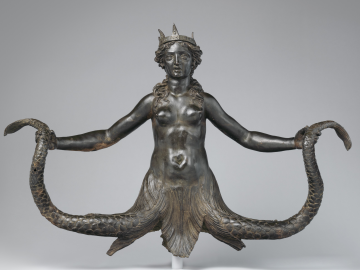Who is Science?
Amanda Niehaus
Originally published in Writers Queensland magazine, September 2019
In their famous study called ‘Image of the Scientist among High-School Students,’ anthropologists Margaret Mead and Rhoda Métrauz discovered that students from across 1950’s USA saw science as un-social and un-imaginative, practiced by people with ‘the highest and most selfless motivations.’ More specifically, a scientist was a man, an elderly or middle-aged man in white coat and glasses, who spent his day conducting experiments in a laboratory full of equipment. He was ‘a brain.’ A man who ‘peers raptly through microscopes.’
Is this science?
Before we move too far from this image, I would like to take a moment to defend those students in Mead and Métrauz’s study, because many were asked the wrong questions. Some were asked: ‘When I think about a scientist, I think of …’ —which is, I believe, a fair open-ended question. But the rest?
Boys were asked: ‘If I were going to be a scientist, I should like to be the kind of scientist who …’ and girls were asked—and you have probably already guessed this—‘If I were going to marry a scientist, I should like to marry the kind of scientist who …’ Boys and girls were also asked what kind of scientist they would not like to be or not like to marry, respectively. Some respondents believed that, due to absolute neglect of their bodies, families, and social lives, ‘a scientist should not marry’ at all.
We have made a lot of progress since the 1950s, yet even today most children asked to draw a scientist will draw a male one. Is science a man in a white coat, as described in Mead and Métrauz’s study, ‘going without food and sleep’ in selfless pursuit of knowledge? In more than 20 years in the sciences, I have yet to meet a scientist precisely like this, mostly because the pursuit of knowledge is never entirely selfless. Like the characters we write or read or watch on-screen, real scientists are motivated by many things—including discovery, progress, and the hope of doing something that means something, yes, but also by emotions, fears, and ambitions. Just as much as the rest of humanity.
Science is so much more than a man in a white coat
This is where creative writing can make all the difference. By writing the complex lives of diverse scientists, writers of fiction and nonfiction can bring science into new communities of readers, creating positive vicarious role models that circumvent common stereotypes. It is important that we show scientists as the very real, very flawed human beings they are. In fact, when students learn about scientists’ struggles—the narratives shaping their major discoveries or lifelong achievements—they are more interested in science and remember scientific concepts better. Those who feel that their own traits and abilities align with those of scientists are more interested in science. This is a good thing. In our modern, ‘post-truth’ era, years of scientific study can be discounted in one fell tweet; we can no longer rely on the facts to speak for themselves.
Ultimately, scientists can’t fix this alone—swaying a culture takes art.
Over the last five years, I have become the kind of scientist who writes to test ideas, experiments on the page rather than in the lab, collects words and images rather than frog eggs or marsupials. I weave the lives of scientists—my own and others’—with the science we have made, because our working lives and curiosities are so much of who we are. You and me, any of us, in any occupation. In my first novel, The Breeding Season (Allen & Unwin, 2019), Elise sees her losses through the lens of her work: her miscarriages, tenuous job security, and floundering marriage align with the life-and-death struggles of the marsupials she studies. The species that I, too, studied to understand how to survive my own fears and grief.
I could tell you now that these marsupials that Elise and I studied, antechinuses and male northern quolls, breed and then die; that at certain times of the year, most of the population is female; that these species persist, despite their unusual reproductive strategies. Sex and death. It’s fascinating: a great, true story that begs re-telling.
But would you feel it in your bones? See it in your everyday life?
What if I show you?
What if I give you two characters who live it, and you with them?
The art we make engages readers in new worlds, introduces them to people they have never met, and immerses them deeply in hypothetical or historical situations. Narratives incite empathy for the other, whatever it may be, and make space for imagination and conversation about difficult or complex issues. Scientific facts can seem very abstract, unrelated to day-to-day lives—and this hinders progress in areas where we urgently need to make it, such as slowing global climate change. By weaving scientific facts and concepts into our stories, essays, books and poetry, we can bring the distant closer, into the hands and minds and hearts of readers. We can show them why it matters.
According to Jodie van Horn, Director of the Sierra Club’s Ready for 100 campaign: “We can’t just tell people wind and solar are better, and do economic impact studies about how they create jobs. People cannot imagine it unless it is visible. People need to see and feel it—how does my daily life change?”
And change is coming, from so many directions at once that it can be hard to take it all in. Science describes change, is itself built on change, but stories are how we digest it.
So who is science? You are.


